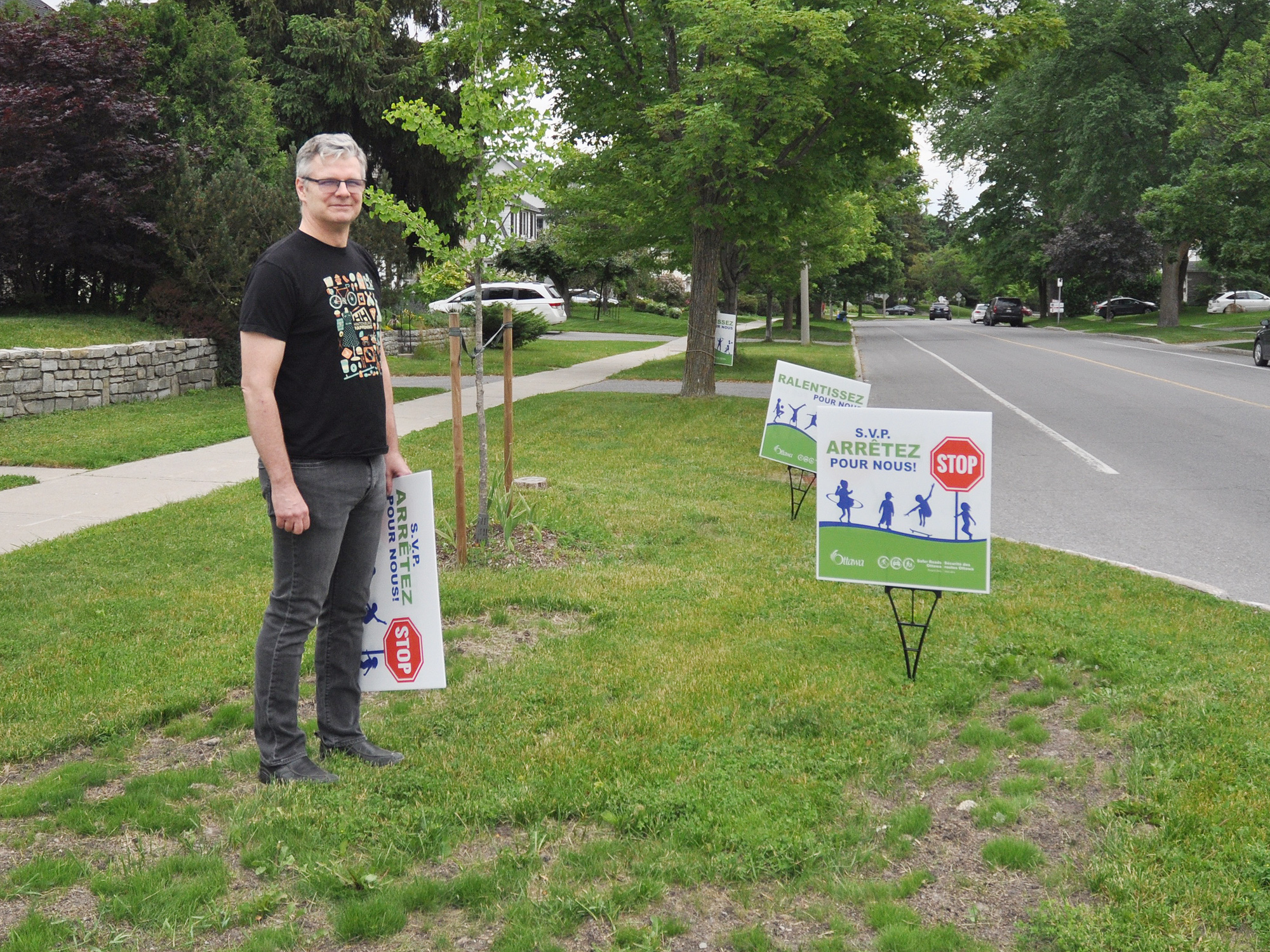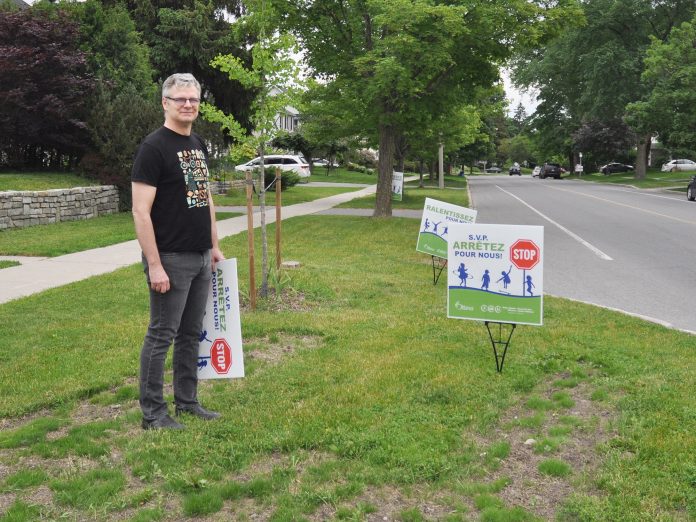Good communities pull together. This is about more than cheering for the Senators, Red Blacks or Fury. The deeper sinews of community are expressed by jointly made decisions and agreements to be bound by common rules. As any local community organizer will tell you, this is not always easy. It requires tolerance to make communities work; respectful treatment of differences and an agreement that even if the rules never fully suit our every wish and whim, we agree to be bound by them for the greater good. This is what enables a community to thrive.
It is one of our many fortunate inheritances as members of the Ottawa community that we don’t normally need to really think about what it takes to enable a community to thrive. We don’t normally need to think about what builds it up and what insidiously can tear it down. Recently, I came across a surprising limit to the bounds of our community in my own Kitchissippi neighbourhood of the Civic Hospital.

My wife and I and our three children live at the entrance to Reid Park by Sherwood Drive. We have become increasingly worried by the flagrant disregard for the stop signs at the corner. Lots of kids and dog walkers use this corner to get to Reid Park. A growing number of cars use Sherwood to get to Parkdale or Carling Avenue. Unless there is respect on both sides, the results could be catastrophic.
After watching drivers – some of whom don’t even slow down at the corner – we were inspired to pick up some of the City of Ottawa, Safer Roads Ottawa signs that encourage drivers to observe the rules of the road. Ours said: Please stop for kids. This seemed to us to be a reasonable attempt to try and encourage law-abiding behaviour. Can’t we all just get along? It seems not.
Within a week, our signs had been stolen four times. We had assumed this was probably teenagers acting out some adolescent energy or possibly some copy cats trying to get their own signs the easy way. These turned out to be incorrect guesses. A week ago my wife saw someone in the midst of stealing our sign. She was surprised to see two adults depositing the sign in their car and driving off. What happened next surprised us even more. I was looking at the scene of the crime the next morning when I came across what I thought was a piece of garbage on our lawn. It was a message (in all caps) from the thieves:
TO OUR DEAREST PLASTIC PLACARD PROTESTOR (sic)
WE FIND YOUR NON-BIODEGRADABLE SIGN POLLUTION OFFENSIVE TO OUR SENSES AND ENVIRON-MENT. THERE ARE OTHER MEANS BY WHICH YOU CAN PROTEST AND ADVERTISE YOUR UNHAPPINESS OTHER THAN POLLUTING OUR BEAUTIFUL NEIGHBOURHOOD AND BOULEVARD WITH YOUR UNATTRACTIVE, DISTRACTING, ANNOYING, CHEAP, TAWDRY AND GAUDY URBAN SIGNAGE. IF YOU HAVE A PROBLEM WITH MOTORISTS GOING THROUGH A STOP SIGN CALL THE POLICE AND HAVE THEM DEAL WITH IT AS IT IS THEIR JOB AND WE PAY THEM FOR THIS SERVICE. …
IF YOU HAVE A PROBLEM WITH YOUR CHILDREN PLAYING IN THE STREET OR YOUR CHILDREN ARE UNEDUCATED IN STREET SAFETY THEN YOU HAVE FAILED AS A PARENT IN THIS REGARD. PLANT SOMETHING BEAUTIFUL FOR PEOPLE TO STOP AND ENJOY.
Our thieves in their all caps fury fancied themselves vigilantes striking a virtuous blow for the environment, beauty and against bad parents. The question is: did they have a point? Let’s take a look at their arguments.
Are we protesters? We didn’t start out that way and I wonder what have we come to when encouraging lawful behaviour is seen as a gesture of protest. To be clear, we put a sign on our lawn to encourage people to observe one of the fundamental rules of the road. We were not trying to shake the established order. It seemed more like a reminder, an “excuse me you are stepping on my foot would you mind ceasing” kind of gesture.
Are they protesters? It doesn’t seem that skulking around in the middle of the night, destroying property and then sending anonymous letters constitutes standing up for what you believe in any more than a frat prank constitutes civil disobedience. If the vigilantes have a real problem with a stop sign or stop signs in general then a real protest would mean trying to publicly convince people of your point of view.
Should the police be involved? It’s not often that vigilantes call for a greater police presence, so this argument bears special consideration. Is this really how we as a society think our police should be deployed on a regular basis? Do we think of ourselves as a community that only follows rules when it is backed by force? My vote is no. Civil societies do not need the police to monitor all rule following. I would prefer to have our police focus on serious crime.
Is urban signage gaudy? The vigilantes’ impressive stream of adjectives would have us think so, but here they are either erratically inconsistent or protest too much. Their professed aesthetic sensitivity is hard to reconcile with the fact that within one block of the theft there were at least five other signs advertising everything from student painting and renovations to real estate for sale and sold signs. None of these signs appeared to attract their ire. It seems to me that it was not how the signs looked, it was what they said that was the problem. For the record with municipal, provincial and federal elections all occurring over the next two and a half yars, our vigilantes might wish to bear in mind that it is a criminal offence to steal or deface a political lawn sign. Last election, Canadians were charged with mischief and stolen property for such behaviour.
Have we failed as parents? This is a sensitive point. No parent would lightly throw this accusation out, but, since it was raised it needs to be asked. The basics of streetproofing our kids entails teaching them to look both ways and use the cross-walk which, in turn, depends on drivers following the rules of the road, particularly (does it really need to be said?) stopping at stop signs. Street proofing kids also means street proofing drivers. It involves the whole community to keep an eye out, especially near schools and parks. To do otherwise, would be to raise our kids in fear. And speaking of not giving in to fear, we would like to teach our children not to be intimidated by bullies and vigilantes skulking in the shadows. That’s one reason why we will be getting more signs – lots of them. The other reason is that we still believe in our community and are willing to take a stand with it.
Al Sutherland,
Civic Hospital
